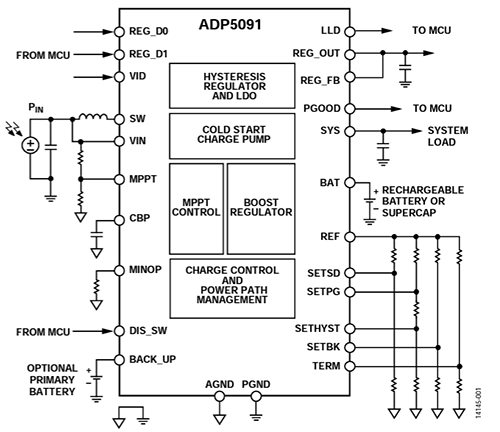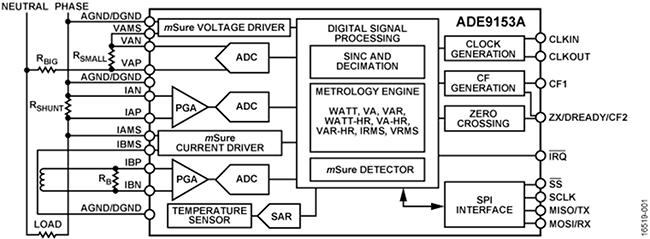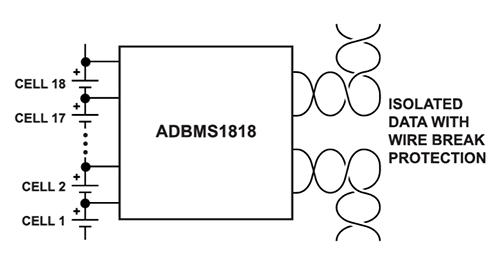An overview of techniques that maximize the power generation of renewable energy
How do you Maximize Efficiency with Renewable Energy?
Renewable technologies are improving quickly, becoming more efficient and more affordable every day. Today, just a small portion of the world’s energy usage is derived from renewable energy; however, a future of 100% clean energy is fast approaching. In July 2021, the European Union proposed, with its Fit for 55, a plan to reduce greenhouse gas emissions by at least 55% by 2030, with the goal of achieving climate neutrality by 2050. This ambitious plan includes a proposal to increase the share of renewable energy in the EU's energy mix from 20% to 40% by 2030. How can this goal be achieved? Harvesting, aggregating, and delivering enough renewable energy to meet the global electricity demands is a challenging and ultra-large-scale engineering project.
What are the Main Sources of Renewable Energy?
Renewable sources, such as solar and wind, provide an attractive option for generating energy since they are plentiful and available Solar and wind power systems can produce clean, reliable, and low-cost energy for years. With the help of advanced chemistries, such as copper indium gallium selenide (CIGS) and nanoparticles, solar cells now have lower production costs and flexible form factors. Costs are also reduced with high-volume production and advancements in the manufacturing process.
However, in photovoltaic systems, the conversion of DC electricity to AC power for grid use is a crucial step that must be efficient and cost-effective. Additionally, the "balance of the system" (BOS) - which includes all components other than the panels - still accounts for a significant portion of the total cost. According to a 2021 report by the National Renewable Energy Laboratory (NREL), BOS costs now account for around 35-45% of the total installed cost of residential PV systems, and around 40-50% for commercial-scale systems. While these costs have been decreasing in recent years, they are still a significant factor in the overall cost of PV installations.
Transitioning to renewable energy is a massive undertaking that requires meticulous planning. If utility companies are to generate a significant amount of electricity from renewable sources, they must establish large-scale installations of solar, wind, and hydroelectric plants. However, simply generating the energy is not enough; it must be transported and stored efficiently using a distribution grid that can handle the load of intermittent energy sources. To further optimize the energy use, conservation and efficiency devices must also be implemented, such as mass adoption of LED lighting technology. In addition to technological challenges, financial considerations and public policies must also be considered to make the transition to a renewable energy future a reality.
Power Management
Shop our wide variety of Power Management ICs from Analog Devices.
Don't forget to join our discussion.
What is Energy Harvesting?
Energy harvesting is an exciting alternative energy story that is worth discussing. Instead of just focusing on different sources of energy, energy harvesting challenges us to think outside the box and look at the smaller sources of energy all around us. Extensive wind or solar farms in remote locations might generate vast amounts of power, but they do not take advantage of everything. What about a gentle breeze, a ray of sunlight, or a trickling stream? These small sources of energy may seem insignificant, but when you consider their scale and potential reach, a whole new realm of ideas and applications can be unlocked.
Harvesting energy from these sources requires creativity and intelligent energy management. Even the tiniest amount of wind, vibration, or sunlight can be harnessed and put to use, but it takes some innovative thinking to make it happen. A cell phone could be able to charge itself from the radio waves floating through the air. Road sensors that report traffic conditions could be powered solely by the weight of cars driving over them. Solar-coated windows could allow just the right amount of sunlight to illuminate and heat a building, then use the remaining sunlight to produce electricity. Vibration, magnetism, heat, and other ambient energy can all be converted into electrical energy. To harness these renewable sources, we need to develop intelligent ways of converting even the smallest amounts of wind, vibration, or sunlight into useful energy.
Making the Most of Ambient Energy
Analog Devices offers a variety of devices that make possible the implementation of alternative energy systems, from the small-scale energy harvesting to large-scale solar farms. For small-energy generation, the ADP5091 is an intelligent, ultra-low power energy harvester and power management unit (PMU). The ADP5091 provides power conversion from a 6 µW to 600 mW range. Potential applications include PV cell and thermoelectric generator (TEG) energy harvesting, as well as energy harvesting from portable and wearable devices.

Figure 1: Analog Devices ADP5091/ADP5092 Typical Application Circuit Block Diagram
Source: Analog Devices
An evaluation board for the ADP5091 is also available.
Accurate Measurements for Medium and Large-scale Energy Generation
Keeping track of how much energy is being produced provides important insight into the health and efficiency of the system. The ADE9153A from Analog Devices is capable of highly accurate measurements, and includes mSure, a feature that enables automatic calibration of the current and voltage channels without using an accurate source of reference meter when a shunt resistor is used as a current sensor. With accurate monitoring, power producers can gauge the performance of their solar or wind power systems, making adjustments as needed. With the increasing percentage of renewable power on grids, utilities are relying more than ever on accurate and speedy energy measurements to ensure uninterrupted power delivery while seamlessly integrating variable sources.

Figure 2: Analog Devices ADE9153A Circuit Diagram
Maintaining Energy Storage Systems
Although energy generation from renewable sources often takes center stage, it's important not to overlook the important role that battery management plays in energy storage. As battery chemistries continue to evolve with advancements in technology and changing application needs, safety and maintaining continuous battery operation remain essential priorities.
The Analog Devices ADBMS1818 is a highly integrated, multicell battery monitor that provides accurate and reliable battery management in a compact package. It can measure up to 18 individual cell voltages simultaneously with a high level of precision. The ADBMS1818 also includes built-in temperature sensors and passive balancing circuitry, which helps to maintain the health and longevity of the battery pack. In addition, the device is designed to operate in harsh environments, with a wide temperature range of -40°C to +125°C, ensuring reliable performance even in extreme conditions. The ADBMS1818 also supports daisy-chain configuration, allowing multiple devices to be connected together and controlled with a single interface, simplifying system integration and reducing costs.

Figure 3: Analog Devices ADBMS1818 Typical Application Circuit
Summing up: Maximizing the Potential of Renewable Energy.
in partnership with

Renewable energy has the potential to provide significant power, and the environmental benefits of their integration and conservation are undeniable. However, it's important to note that the realization of these benefits depends on carefully managed renewable resources and a well-engineered grid.
The European Commission's Energy Roadmap 2050 sets a bold target: reducing greenhouse gas emissions to 80-95% below 1990 levels by 2050. Achieving such an ambitious goal will require a sustained and dedicated effort over the next several decades, but it is not impossible. Success will depend on a combination of innovative engineering solutions, committed utility companies, and optimized circuits for energy conversion, measurement, and communication. Analog Devices provides a comprehensive portfolio of products to support the development and deployment of renewable energy systems, from small-scale energy harvesters to large-scale solar and wind power farms.
What types of applications do you think can benefit the most from energy harvesting?
Please tell us in the Comments section below.

Top Comments